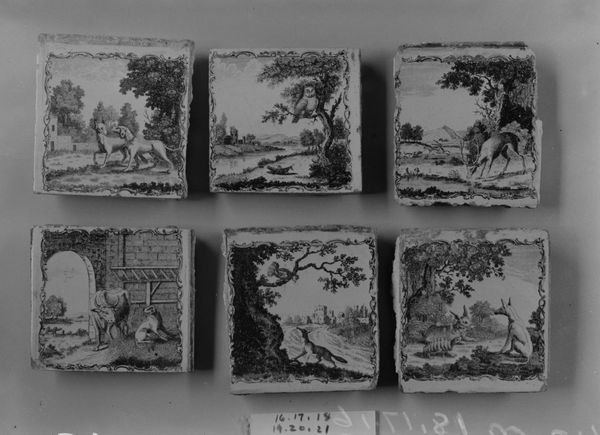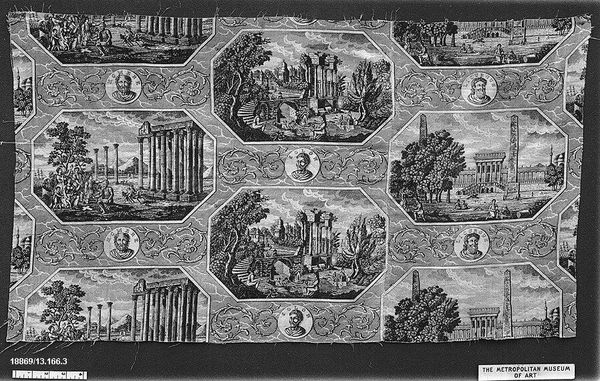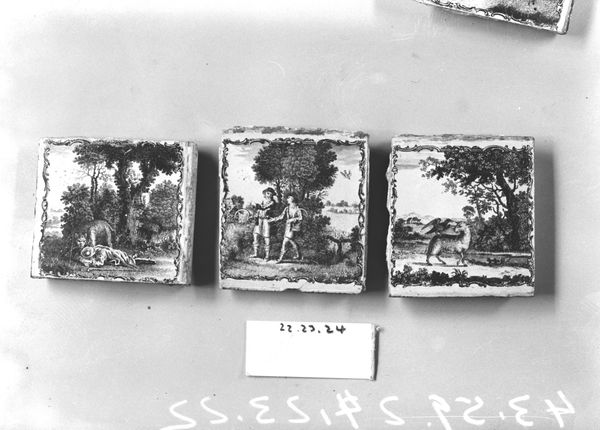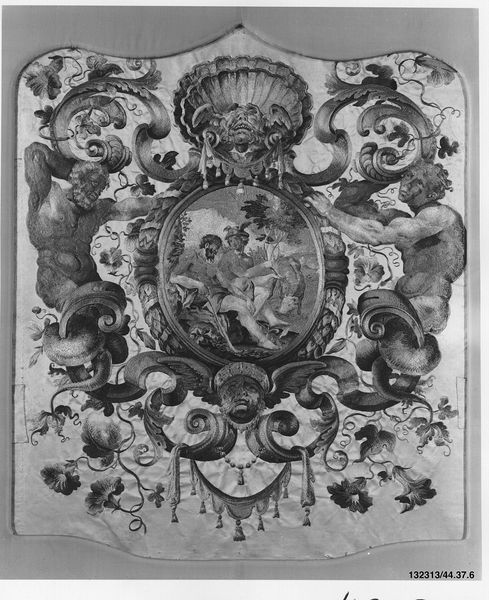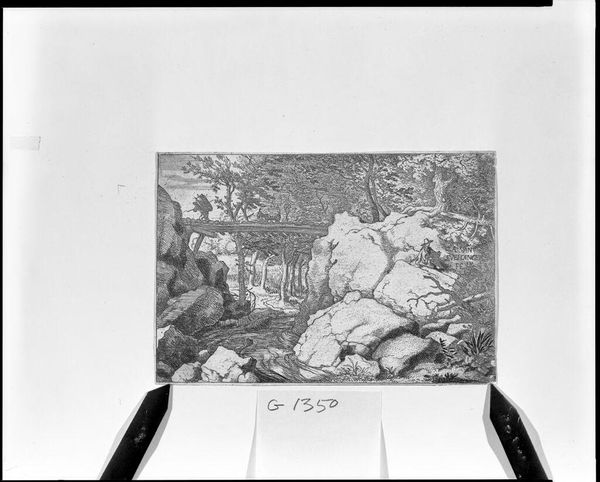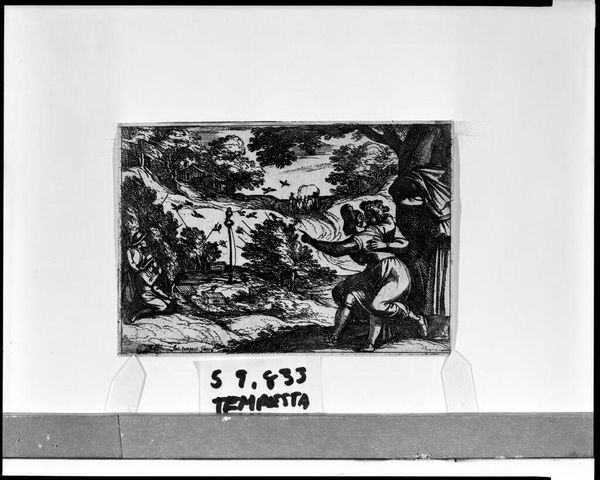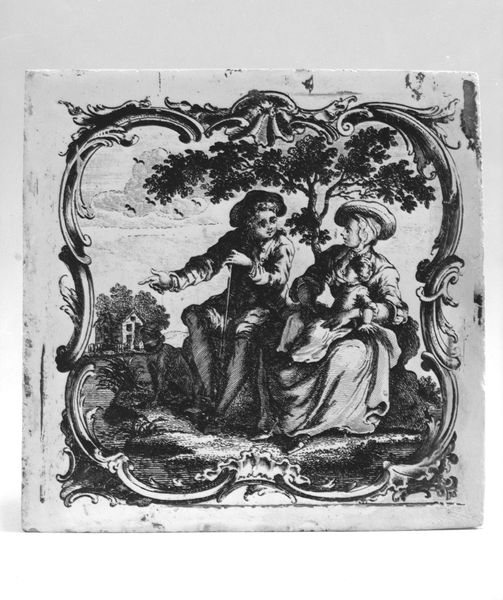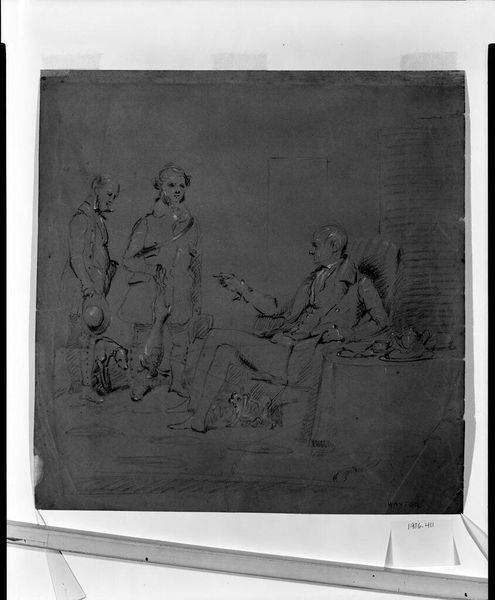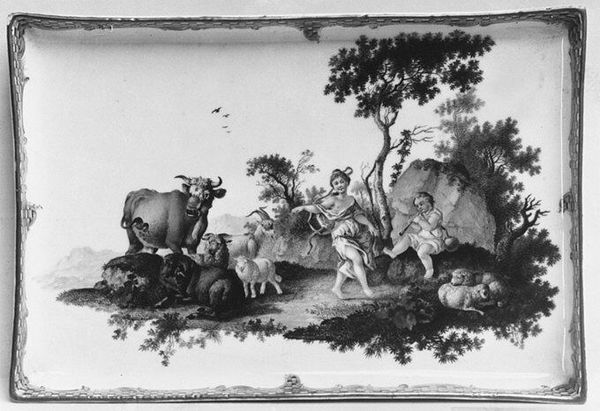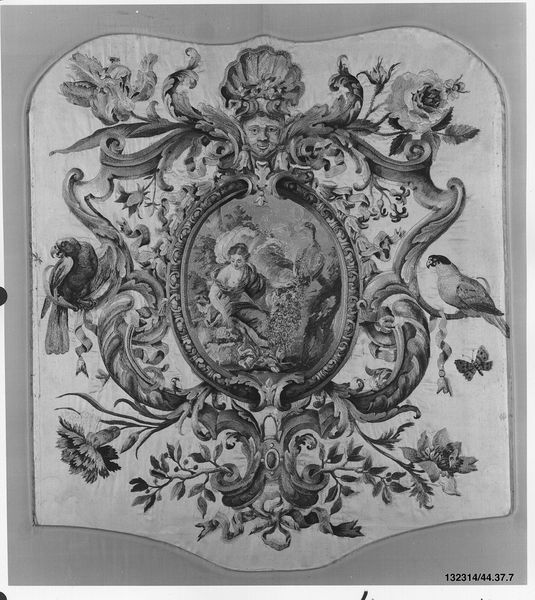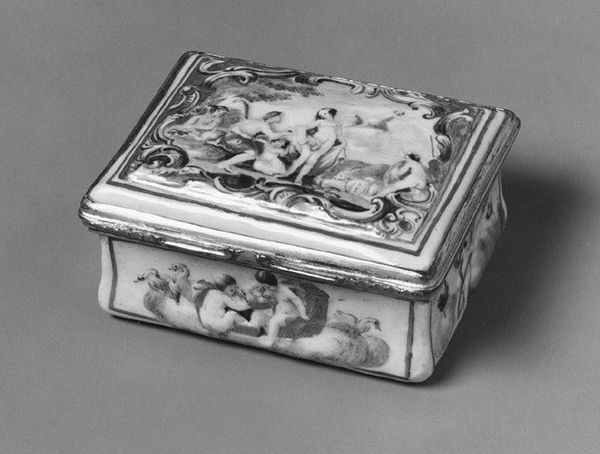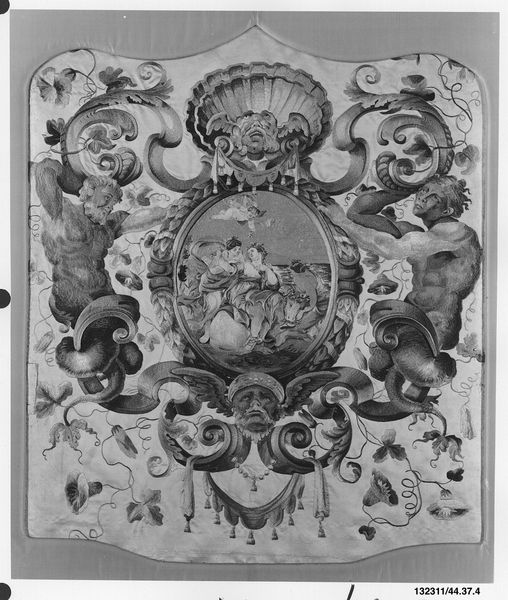
print, etching, ceramic
#
tree
# print
#
etching
#
sculpture
#
dog
#
landscape
#
ceramic
#
sculptural image
#
england
#
carved
#
men
#
genre-painting
#
erotic-art
#
statue
Dimensions: 4 1/2 x 4 1/2 in. (11.4 x 11.4 cm)
Copyright: Public Domain
Editor: We are looking at a ceramic tile from 1771-1776, currently held at the Metropolitan Museum of Art. It looks like an etching or print transferred onto a tile, possibly from England, depicting idyllic landscape scenes with men and animals. I find the transfer process itself interesting, that artisanal way of producing repeatable images, but I am unsure how it speaks to culture. How do you see this tile? Curator: These aren't simply decorative landscapes. Think about the labour involved. Each tile required the mining and processing of raw materials, skilled artisans to craft the ceramic base, engravers to produce the original image, and finally, workers to transfer and fire the print onto the tile. This seemingly simple object reveals a whole network of social and economic relationships. Editor: So, you're suggesting it’s not just about the pretty picture but about all the work and materials involved? Curator: Exactly! Consider the shift from handmade, unique art objects to these early forms of mass production. These tiles democratized imagery, making scenes previously available only to the wealthy accessible to a wider audience. Do you think the landscape scenes represented reality or offered an escape from industrial England? Editor: That’s a really good point, a printed, transfered image gives the illusion of more than it is... it might mask the environmental costs of production at this time. Do you think consumers would've thought of that? Curator: That’s tough to say. Consumption itself plays a role. It served as a status symbol – imagine these adorning fireplaces in homes, a testament to expanding colonial economies. It highlights that while the image may suggest a carefree pastoral life, the tile embodies the complex realities of labor and burgeoning global trade networks of 18th-century England. Editor: So much more than just a pretty tile. Considering its place within a larger material and social system, gives me new appreciation for it. Curator: Absolutely. By understanding the material conditions and social context of its creation, we gain insight into the values and priorities of that era.
Comments
No comments
Be the first to comment and join the conversation on the ultimate creative platform.
